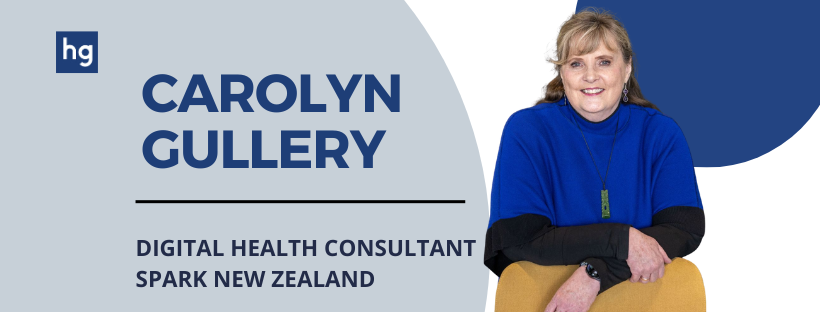Transforming a System Takes Leadership and a Different Approach to Funding
30 Jun 2025

Recently, we had the privilege of welcoming Carolyn Gullery to speak with three of our Executive Learning Sets. She delivered a thought-provoking session exploring what it takes to build a more connected health system, while offering powerful reflections on leadership in action. Energised by the conversation, we invited Carolyn to share more of her insights for this month’s edition. Here’s what she told us:
Integrating healthcare services and fostering innovation requires leadership and funding models that transcend traditional silos, encourage collaboration, and prioritise person-centered outcomes. In my experience, building a funding model that supports a diverse health and social care ecosystem—spanning large and small, public, private, and not-for-profit organisations—demands flexibility, transparency, and a strong investment mindset.
Use Good Data and Transparency to Build Trust
The foundation for effective funding is using good data and evidence to make the problem visible to everyone. When all stakeholders can see and understand the issues through clear analysis, they are more willing to work together to solve them. Openness and transparency in funding decisions builds trust, which is essential for organisations and people to try new approaches and tackle longstanding wicked problems.
Avoid Clumsy Incentives—Focus on Outcomes, Not Activity
People working in health and social care are intrinsically motivated to deliver the best care they can within the resources available. Clumsy financial incentives—such as rigid fee-for-service models—often get in the way of doing the right thing for people and populations. In complex adaptive systems like healthcare, such incentives can become perverse, driving competition between silos and creating uncertainty for organisations. Instead, shift to funding models that reward outcomes and encourage collaboration.
Adopt a “One System, One Budget” Approach
In Canterbury, we moved away from fragmented, ring-fenced funding streams and adopted a “one system, one budget” approach. By pooling budgets across primary, secondary, and community care, we prioritised patient needs over institutional boundaries. Alliance contracting—where providers agree to work together to optimise a fixed pool of funding—fosters trust and collective responsibility. This approach allows dynamic reallocation of funds to areas like early intervention, which can yield significant returns in both the short and long term (for example, the Mana Ake programme delivered a $13.32 social return per dollar invested)1.
Enable Innovation Through Flexible Funding
Flexible funding models make it possible to rapidly adopt innovations. For example, we were able to implement HealthONE (an electronic shared care record) and community-based rehabilitation models that reduced hospital admissions. Traditional funding mechanisms often stifle innovation by tying resources to outdated metrics; system-level, outcomes-led budgeting empowers clinicians to pilot new care models and respond to emerging needs.
Align Funding with Clinically Agreed Pathways
We replaced activity-based payments with outcome-driven incentives. The HealthPathways platform, co-developed by general practice teams and specialists, reduced unnecessary referrals by 30% by supporting primary care to access the diagnostic tools they needed. Aligning clinically agreed pathways with funding in an outcomes-based system led to rapid innovation and eliminated the need for extensive change management support.
Invest in Enablers and Shared Infrastructure
Allocate funds for digital infrastructure, high-quality data analytics, and clinician-led tools like HealthPathways. These investments enable integrated care, support measurement, and drive continuous improvement.
Stabilise Funding for the Not-for-Profit Sector
To truly enable innovation and service improvement, stabilise funding for not-for-profit organisations. Predictable, multi-year funding commitments allow these organisations to invest in staff and service development, rather than being caught in cycles of uncertainty and short-termism1.
Reward Outcomes and Adapt to Context
Shift from volume-based to value-based payments, prioritising preventive care and patient-reported outcomes. After the Canterbury earthquakes, our funding model adapted to population shifts and higher costs, highlighting the importance of openness, transparency, and trust in making these models work.
Summary of Key Actions:
- Break Down Silos: Use unified budgets and alliance contracting to promote cross-sector collaboration.
- Invest in Enablers: Fund digital infrastructure and data analytics.
- Reward Outcomes: Move to resource allocation .
- Adapt to Context: Ensure funding models are flexible and responsive to changing needs.
- Stabilise the Sector: Provide secure funding for not-for-profits to support innovation and improvement.
Decisions about resource allocation in a fixed system must be open, transparent, and based on the best available data and evidence. Compete on quality and performance, not on fee-for-service or revenue penalties.
How we fund our system is critical to maintaining trust and enabling sustainable, integrated care.
To Connect with Carolyn, click Here

